「攝影是時間的機器/攝影是存在的機器/攝影是遺忘的機器/攝影是鬥爭的機器/攝影是詩的機器/攝影是秩序的機器/攝影是快感的機器/攝影是機器的機器」__高重黎
一個幽靈──影像機器的幽靈──在島上遊蕩。
從實驗電影、攝影、動畫、雕塑、影像裝置、視覺玩具發明乃至影像論述書寫,高重黎源源不絕、型態多樣而難以被歸類定位的創作展演,正體現了觀看、影像與歷史的複雜纏繞,以及對於影像不曾止歇、永無終點的提問與思考,是台灣影像藝術創作圖景中極具實驗性與顛覆性的刺點。
高重黎對於「影像生產」如何影響攝影史發展的敏銳問題意識,使他在一個沒有屬於自己的影像生產工具的攝影島嶼裡,透過自行發明、手工產製影像機械裝置,嘗試在只熱衷「生產影像」並由影像消費主導的貧血的視覺文化中,尋索解答;他甚而將眼睛化為攝/放映機,使腦袋變成底片,將嘴做揚聲器,讓自己徹底變成一台人肉影像機器,以他的身體與影像實踐,試圖翻攪、超克當前攝影史發展中看似難以撼動的權力構型。
「攝影是什麼?電影是什麼?看是什麼?」高重黎張大眼睛問。「為什麼我們沒有屬於自己的攝影搖籃、童年、電影的黃金時代?為什麼我們沒有自己的視覺感知、神經的論述原理?為什麼我們沒有自己的影像機器工業呢?⋯⋯」在這份專號裡,我們將探索這些問題的答案,沿著高重黎的創作理路,踏上這一趟影像思索的長征。
為了準備這份專號,我們反覆造訪、整理高重黎經年累積、龐大而散落的創作資料,在他堆滿各類影像器械機具而難以探底的影像庫房中,挖掘他早期的八釐米影片、幻燈片與手稿,收錄他未曾曝光的照片、物件、動畫繪稿、工作筆記與私房收藏,並輯錄他的多篇論述。
此外,我們特別邀集影像研究者張世倫、許芳慈、郭昭蘭、劉永晧與陳煒宗,析論高重黎的影像觀與創作構成,以及藝術家林鉅對高重黎其人其事的白描素寫;同時收錄已故作家陳映真以高重黎作品論辯現代主義藝術與批判意識的評述文字,還有高重黎的長篇訪談。
製作藝術家專號對我們來說永遠是一項艱鉅的挑戰,在此要特別感謝高重黎先生對我們的信任、支持與寬容,無私地與我們分享他的創作生活。我們難以完整呈現他豐富的面向,僅能在有限的條件能力下,做為跨步初探高重黎的一份創作紀錄,並將我們從一位藝術家的影像思考中獲取的啟發,分享給我們親愛的讀者朋友。
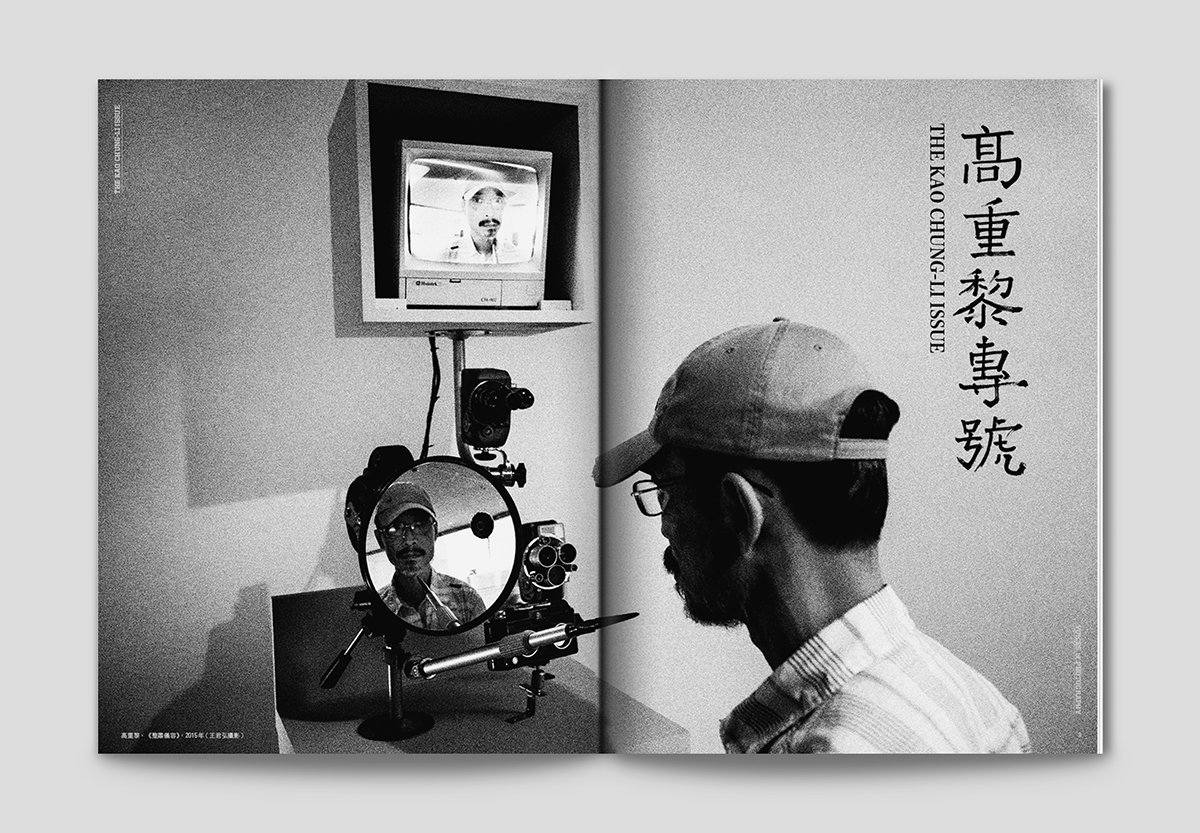
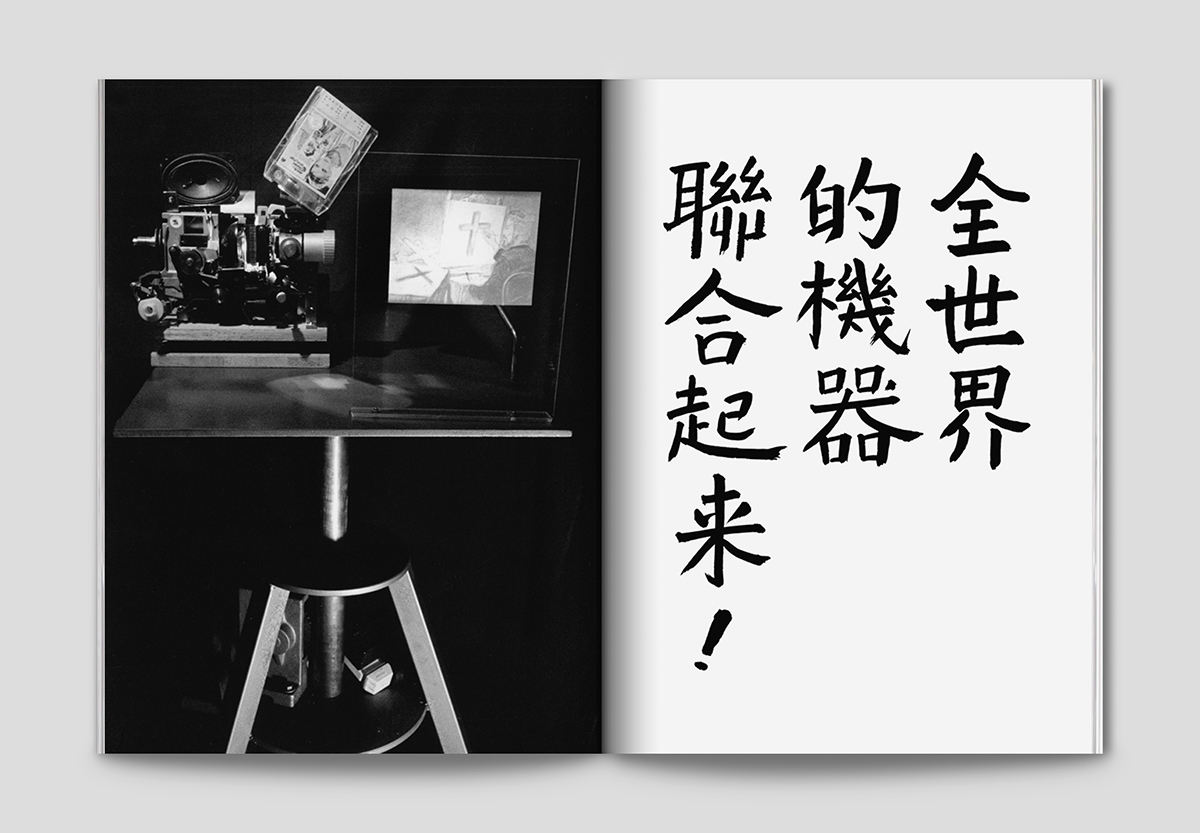
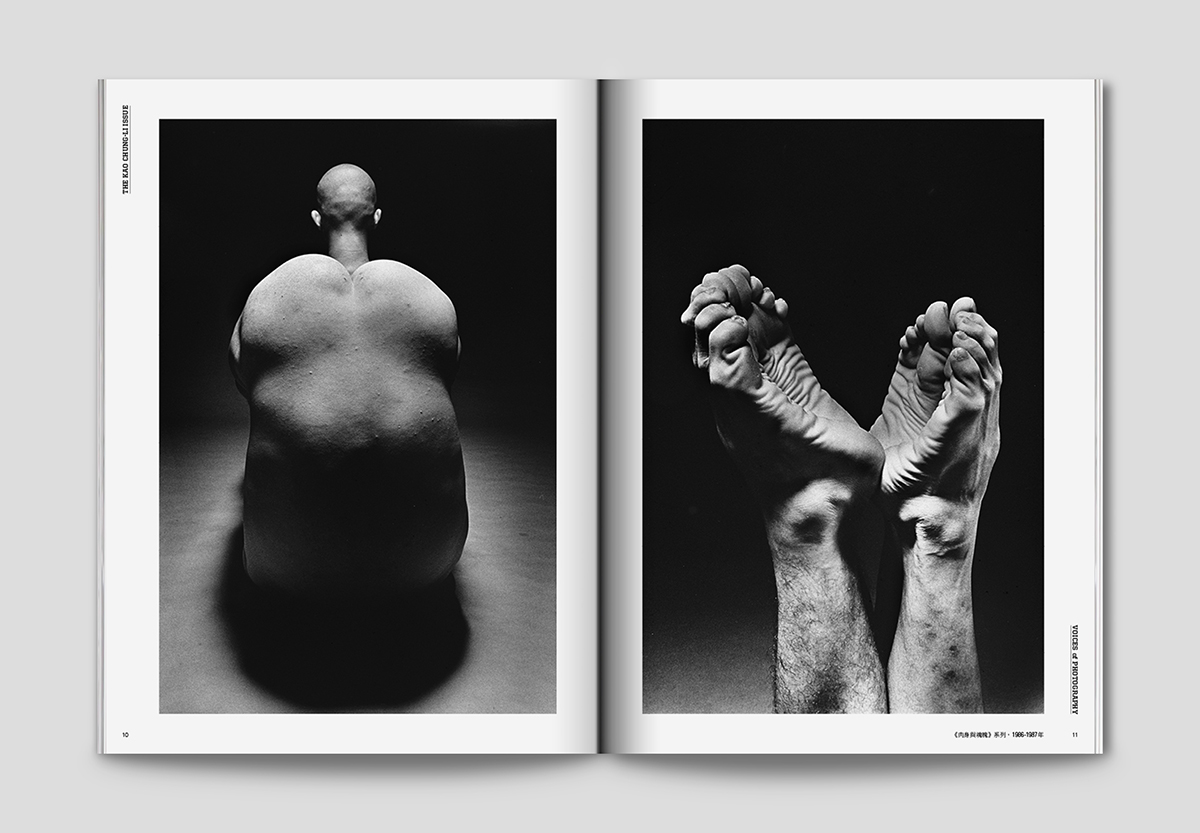
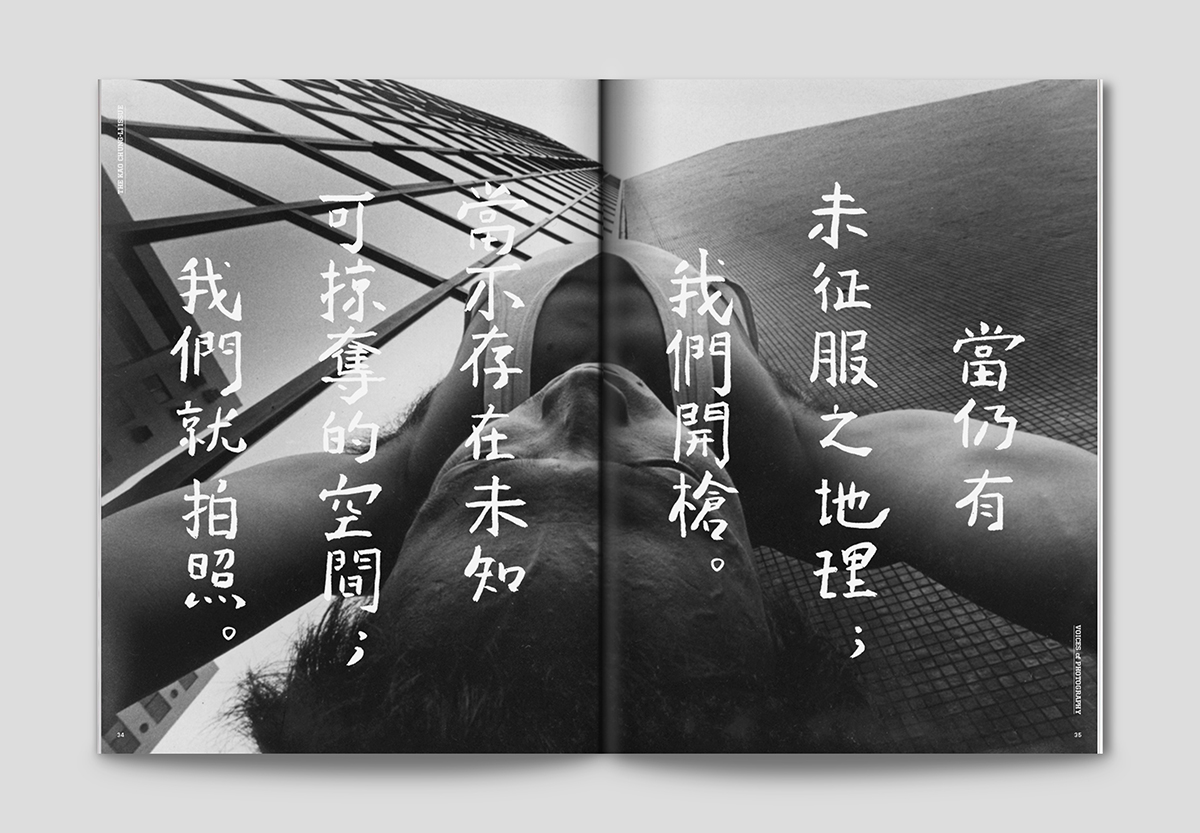
“Photography is a machine of time | Photography is a machine of existence | Photography is a machine of the oblivion | Photography is a machine of struggle | Photography is a machine of poetry | Photography is a machine of order | Photography is a machine of pleasure | Photography is a machine of a machine.” – Kao Chung-Li
A spectre is haunting the island – the spectre of the imaging machinery.
Through experimental films, photography, animation, sculptures, image installations, visual toy inventions and even essays on visual imagery, Chung-Li Kao exemplifies the complex relationship between viewing, imagery and history, and has never stopped questioning and reflecting on imagery through diverse forms of creation that defy classification. Kao is indeed the most experimental and subversive punctum in Taiwan’s visual arts scene.
Acutely aware of how “image production” influences the development of the history of photography, Kao tries to look for a solution within the anemic visual culture dominated by a preference for “produced images” and the consumption of imagery, on this photographic island that possesses no means of its own to produce images and instead relies on inventions of the imaging machinery. He even transforms himself into a human imagery machine – his eyes a projector, his brain a negative, his mouth a loudspeaker. Using his body and putting imagery into practice, Kao attempts to overturn and surpass the seemingly unmovable power structure that is so deeply entrenched in the development of contemporary photographic history.
“What is photography? What are films? What is it to ‘see’?” Kao asks, his eyes wide. “Why do we not have our own cradle of photography, childhood, or golden age of movies? Why do we not have our own theories of visual perception and neurology? Why do we not have our own imaging machinery industry?” In this special issue, we attempt to answer these questions as we embark on this long journey of reflection, along the lines of Kao’s principles of creation.
In preparation for this issue, we visited Kao several times and compiled his vast and scattered collection of work which has accumulated over the years. We uncovered his earlier 8mm films, slides and manuscripts as we dug through his storeroom, filled to no end with all sorts of imagery machines. We also included in this issue never-before-seen photographs, animated drafts, working notes, objects from his personal collection and several of his essays.
In addition, we invited imagery researchers Shih-Lun Chang, Fang-Tze Hsu, Jau-Lan Guo, Yung-Hao Liu and Wei-Tsung Chen to discuss Kao’s imagery perspective and processes, and artist Ju Lin to talk about Kao and his work. At the same time, we also included the late author Ying-Zhen Chen’s commentary on modernist artwork and critical awareness through the lens of Kao’s works, as well as an in-depth interview with the artist himself.
It will always be a daunting challenge to us when it comes to preparing an artist issue. We would like to express our gratitude to Mr. Chung-Li Kao for his trust, support and generosity, and for sharing his life of art creation with us without any reservations. With our limited capability, we are unable to put into print the entirety of the rich orientation of his art, but what we can do is to share with our beloved readers a record of Kao’s creations and the inspiration we got from the imagery reflections of an artist.
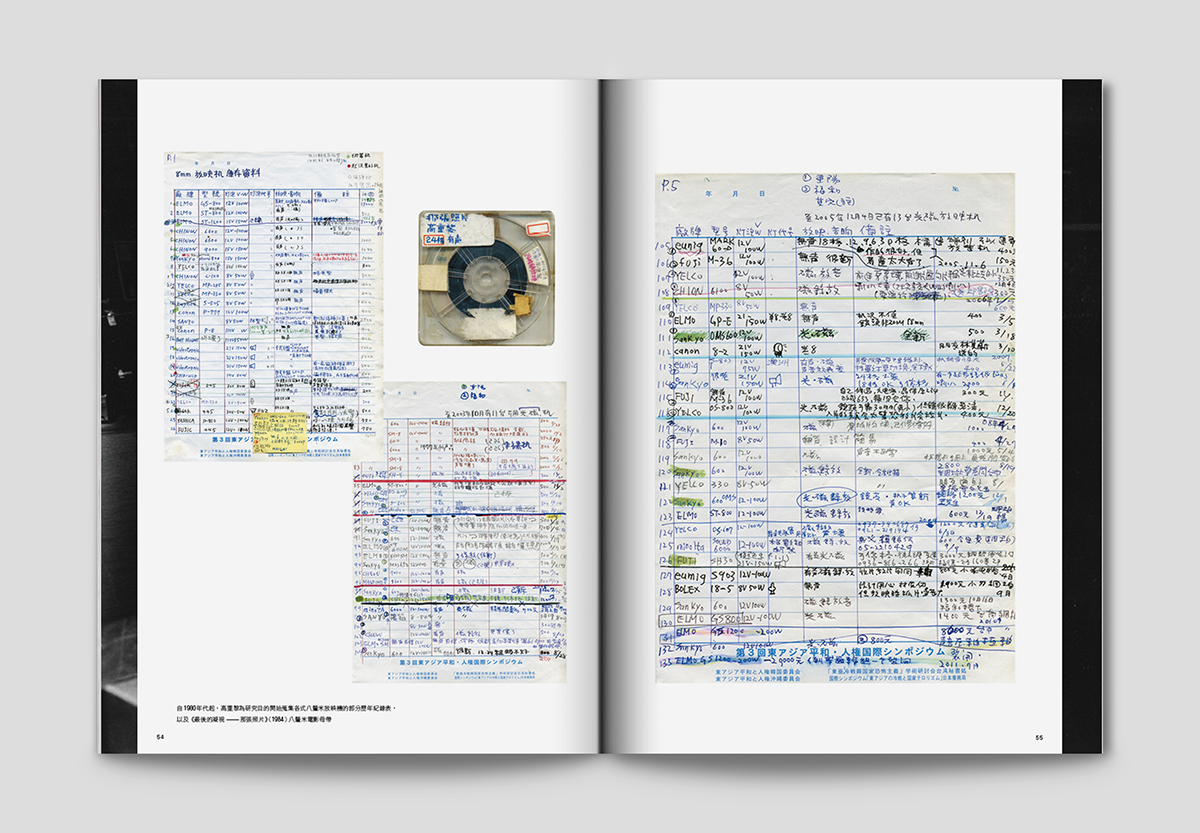
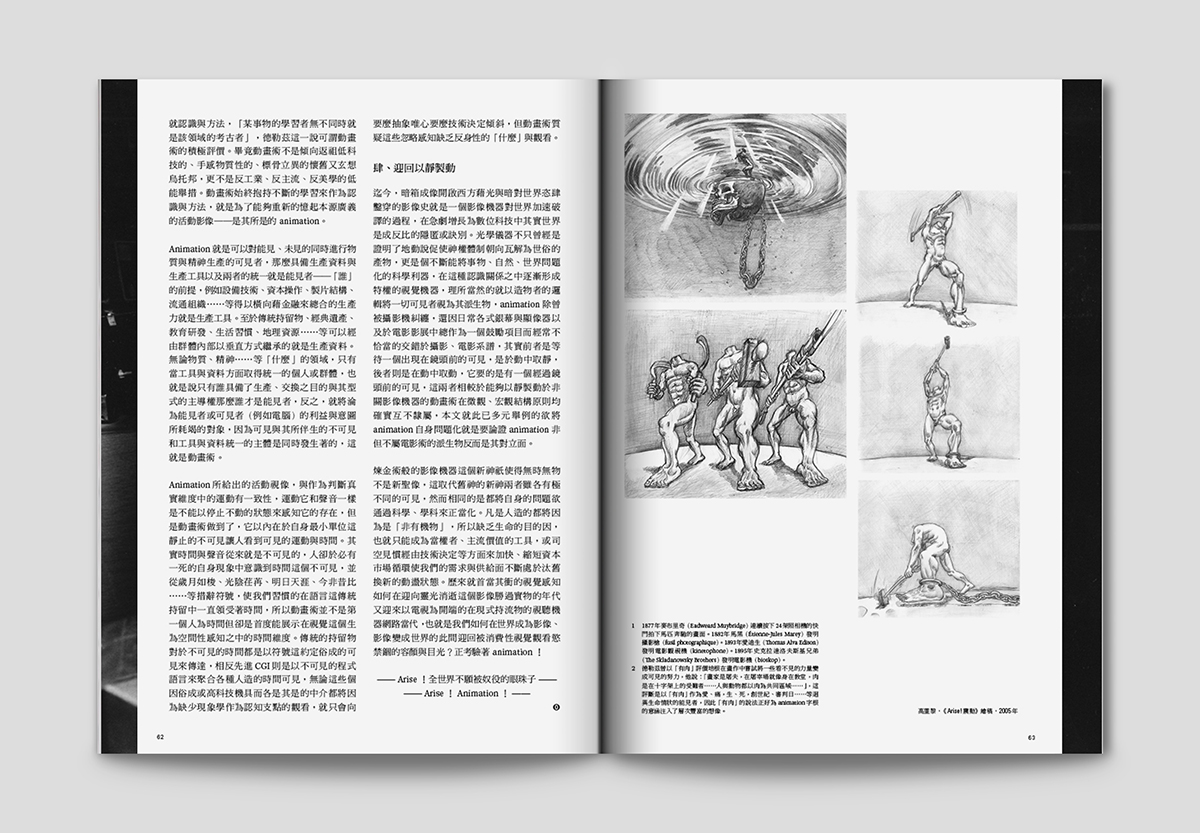
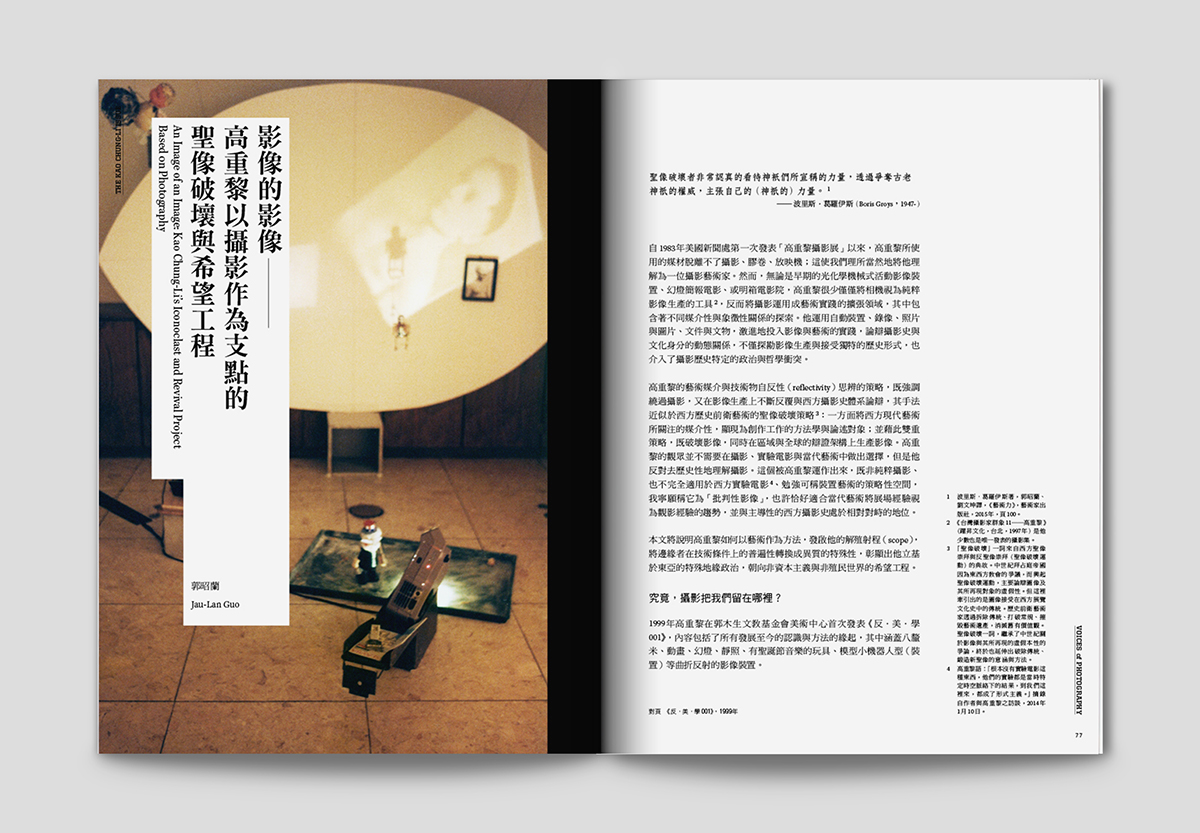
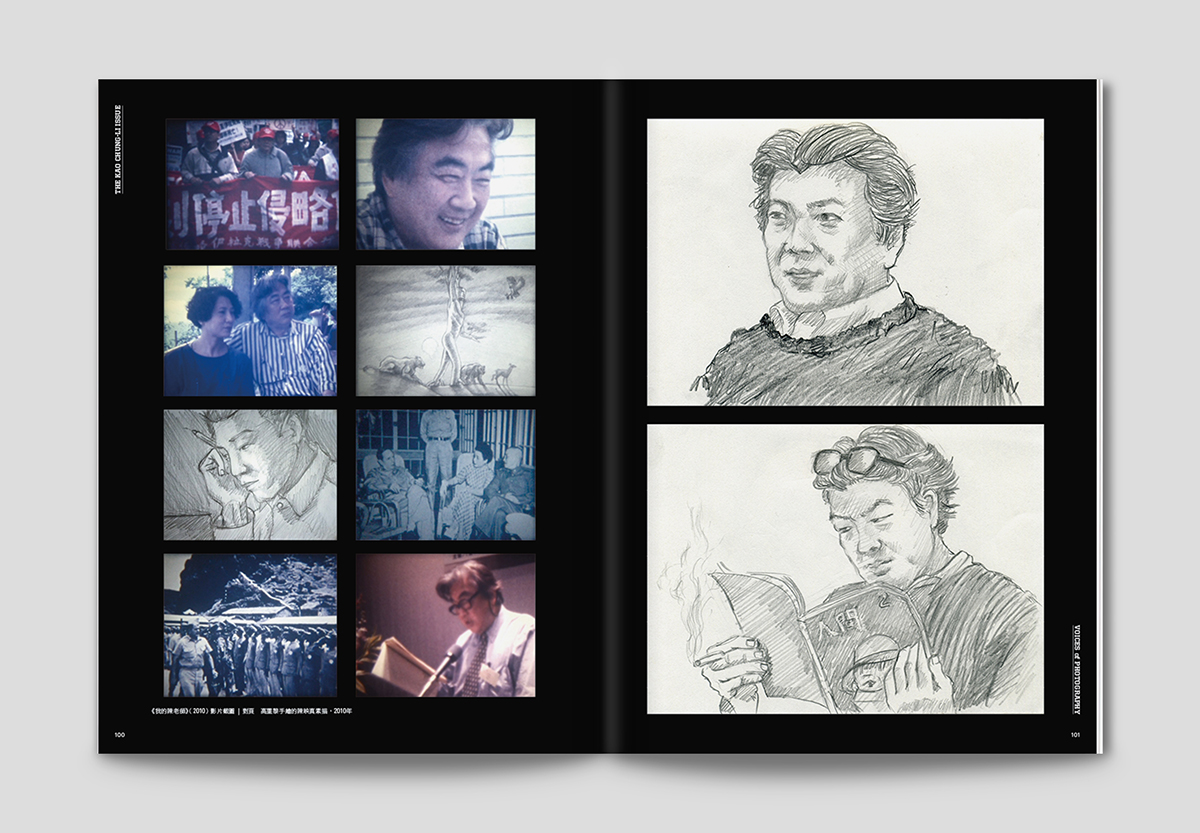
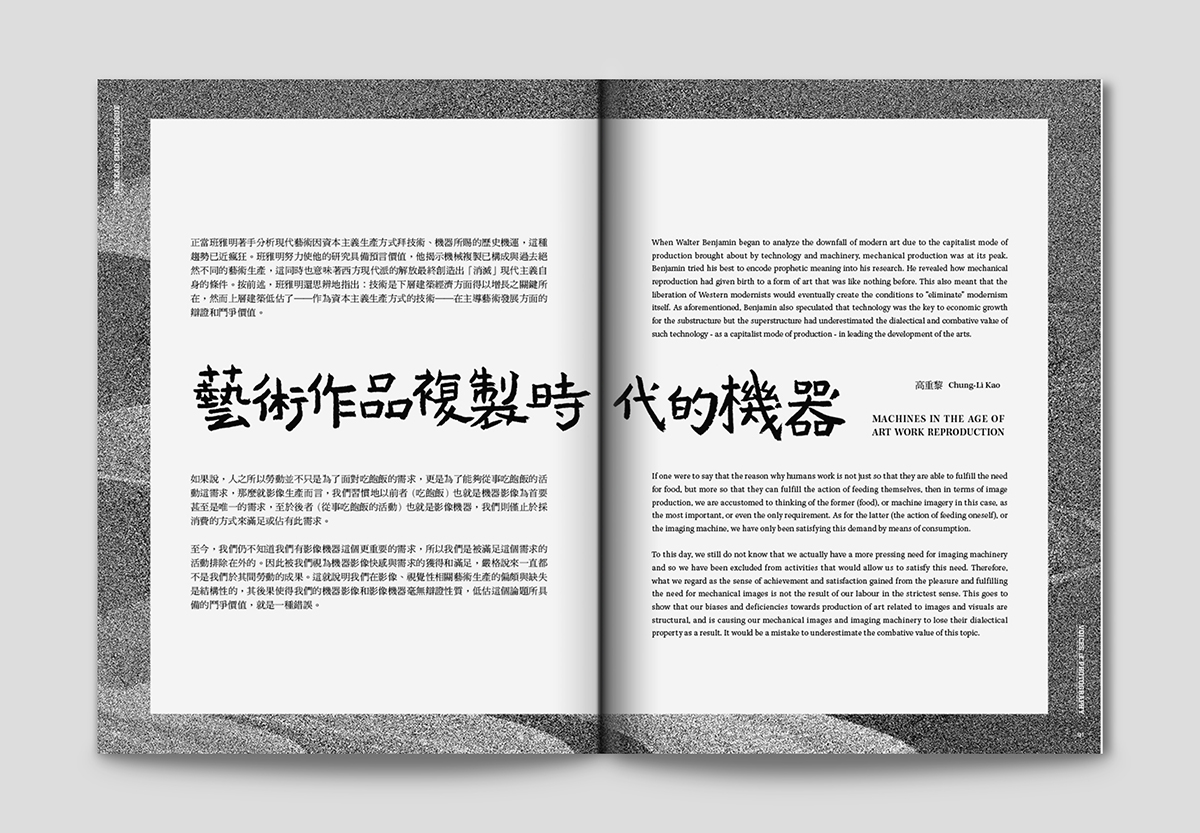
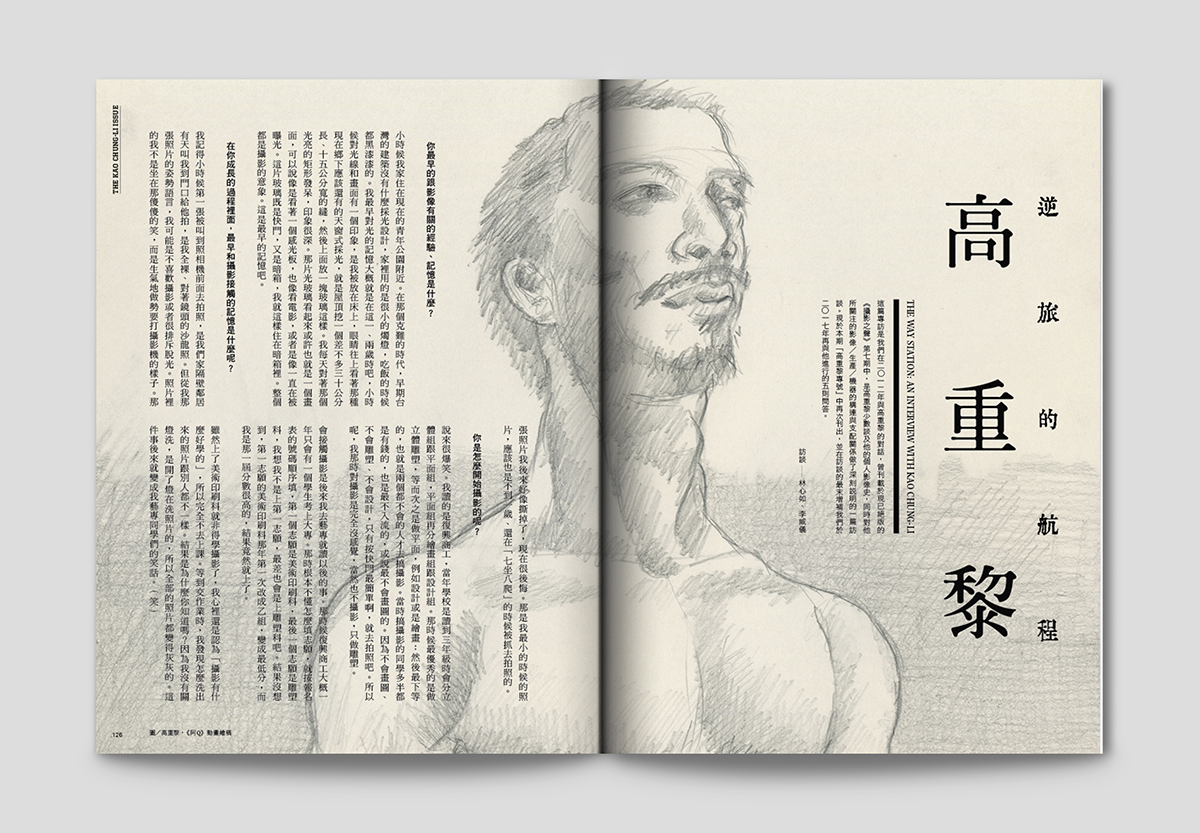

本期目錄 Contents
● 影像拆解與動靜辯證:初期高重黎的攝影—實踐—電影—實驗
Disassembled Images and Dialectical Imaginations:
Kao Chung-Li’s Early Works: Photography – Practice – Films – Experiments
文|張世倫 Text by Chang Shih-Lun
● 高重黎的電影 Kao Chung-Li’s Movie
家庭電影:一部八釐米電影短片的畫外音
Home Movie: The Voice-over of a Short 8mm Flim
● 重黎的二三事⋯⋯
Things About Chung-Li…
口述|林鉅 Dictated by Lin Ju
整理|李威儀 Transcript by Lee Wei-I
● 論辯紀實與藝術的肉身&魂魄
A Debate on the Aspects and Vision of Reality and Art
文|高重黎 Text by Kao Chung-Li
● 實驗──我的電影史
Experiments: My History of Films
文|高重黎 Text by Kao Chung-Li
● 學習,是我的動畫術
Learning is My Animationgragh
文|高重黎 Text by Kao Chung-Li
● 影像機器與其多向度記憶:高重黎幻燈簡報電影之末日三部曲
Image Apparatus and Its Multidirectional Memory: Kao Chung-Li’s Slideshow Cinema – Armageddon Trilogy
文|許芳慈 Text by Hsu Fang-Tze
● 影像的影像:高重黎以攝影作為支點的聖像破壞與希望工程
An Image of an Image: Kao Chung-Li’s Iconoclast and Revival Project Based on Photography
文|郭昭蘭 Text by Guo Jau-Lan
● 高重黎的論述 Essays by Kao Chung-Li
藝術作品複製時代的機器
Machines in the Age of Art Work Reproduction
文|高重黎 Text by Kao Chung-Li
● 《我的陳老師》──幻燈機的投影與蠕動
Projection and Motion of the Slide Projector in My Mentor, Chen Yingzhen
文|劉永晧 Text by Liu Yung-Hao
● 反思和批判的可能性:關於高重黎「影像.聲音──故事」展出的隨想
Possibilities of Reflection and Criticism: On Kao Chung-Li’s “Story in Image & Sound”
文|陳映真 Text by Chen Ying-Zhen
● 持放映機的人──高重黎電影創作中的實踐精神
The Man with the Film Projector: Kao Chung-Li’s Spirit of Practice in Filmmaking
文|陳煒宗 Text by Chen Wei-Tsung
● 一卡皮箱電影院 Cinemas in Suitcases
.一卡皮箱電影院1:3D活動影像觀視器
.一卡皮箱電影院2:對象被摧毀於雙目視覺學
.一卡皮箱電影院3:三態觀視器
● 高重黎.記事.事記
A Kao Chung-Li Timeline
● 逆旅的航程:專訪高重黎
The Way Station: An Interview with Kao Chung-Li
訪談|林心如、李威儀 Interview by Sylvie Lin, Lee Wei-I

